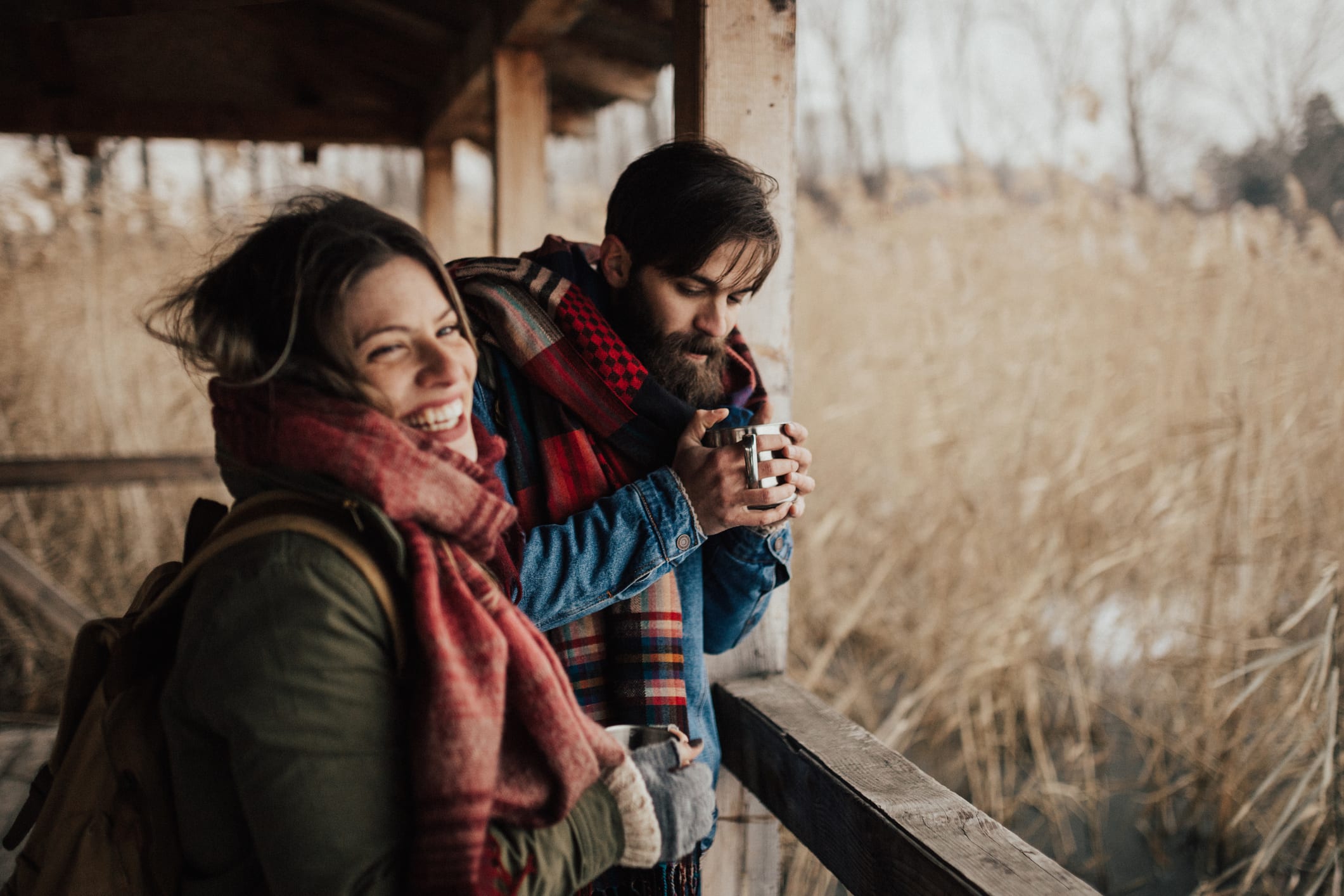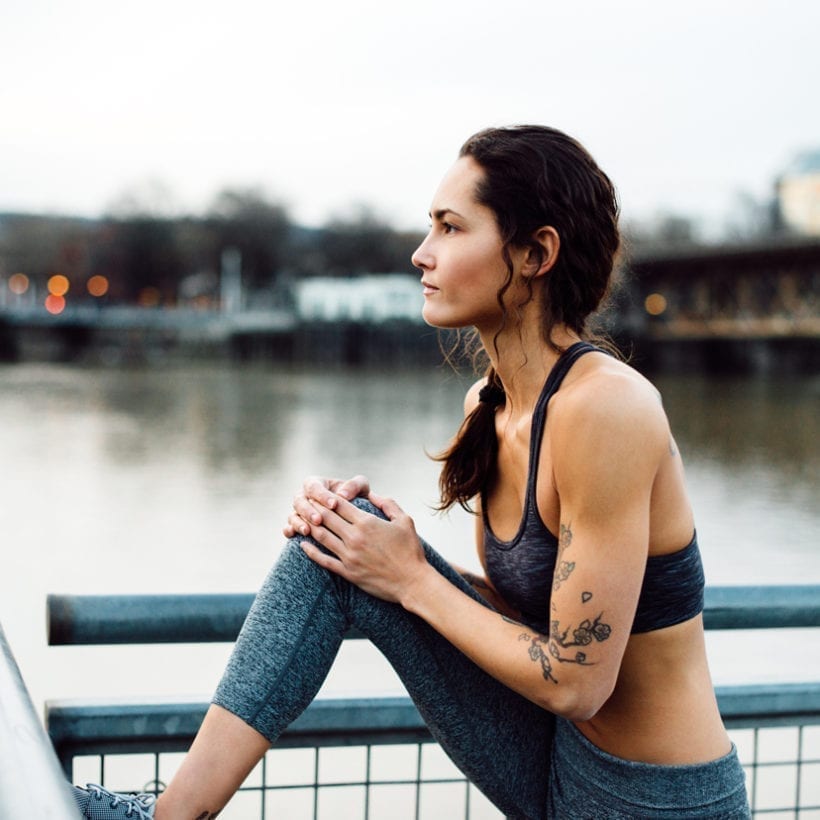Move over niksen, friluftsliv is the latest Scandinavian lifestyle craze in town, and trend expert Dayna Isom Johnson of Etsy just dubbed it the “new hygge”.
Originating in Norway, friluftsliv (pronounced free-loofts-leev) is the Norwegian concept of getting outdoors —even when it’s cold — and fans of the popular lifestyle philosophy say that it supplies both emotional and physical health benefits. And while stepping outside every day, regardless of the weather, might not seem like a big deal, as we continue to safely hunker down at home and practice social distancing during the pandemic, friluftsliv can offer a connection to nature and its calming, anxiety-quelling effects.
Unlike the Dutch philosophy of niksen, which supports slowing down your brain periodically throughout the day by doing nothing, or the Danish concept of hygge that emphasizes coziness at home, friluftsliv is all about celebrating the great outdoors, no matter the time of day or weather.
Interested in learning more about friluftsliv? From the mental health benefits of friluftsliv to ways to practice it at home and more, here’s what you need to know about the popular Nordic lifestyle philosophy.
What is Friluftsliv?
 The expression “friluftsliv” — which literally translates to “open-air living”— was coined by the famous Norwegian playwright Henrik Ibsen in the 1850s, who used the term to describe the value of spending time in remote locations for spiritual and physical wellbeing.
The expression “friluftsliv” — which literally translates to “open-air living”— was coined by the famous Norwegian playwright Henrik Ibsen in the 1850s, who used the term to describe the value of spending time in remote locations for spiritual and physical wellbeing.
Since Scandinavian winters are notoriously dark and cold (with the sun usually setting around 3 p.m.), friluftsliv has evolved into the modern-day practice of going outside and getting some fresh air regardless of how chilly or dreary it may be.
You see, there’s an old Scandinavian adage that claims “there’s no such thing as bad weather, only bad clothing” that definitely applies to the concept of friluftsliv. In Norway, friluftsliv is a year-round practice for many adults, and even children are taught from a young age to dress comfortably for cold weather so they are always prepared to spend time outside.
How is Friluftsliv Practiced?
Depending on the time of year or location, Scandinavians practice friluftsliv in an assortment of ways. For some it might be hiking, skiing, or camping out in the forest, for others it could be as simple as having a picnic with friends in the park.
It’s also important to point out that friluftsliv can be enjoyed both socially and solo. That’s why even if you take a quick stroll around the block on your lunch break, you are still practicing friluftsliv — and reaping the benefits of going outside.
What are the Benefits of Friluftsliv?

While studies have long shown that spending time outdoors supplies physical health benefits, including lower blood pressure and an improved immune system, research suggests that there are also emotional and mental perks of practicing friluftsliv. Along with reduced levels of stress and anxiety, studies show that spending time outside despite the weather can boost feelings of self-confidence and self-sufficiency.
Of course, integrating a daily or weekly friluftsliv practice into your routine can be particularly helpful as we spend more time indoors this winter during the pandemic. With restaurants closed and social distancing restrictions to follow, spending time outdoors—even if it’s just for a few minutes—is a safe way to break away and get some fresh air, especially when you work from home.
How Can I Practice Friluftsliv at Home?
Planning a friluftsliv-friendly activity isn’t as intimidating as it sounds. Here are five ways to reap the benefits of practicing friluftsliv at home that won’t require a trip to Norway.
- Plan a weekly outdoor outing. A little fresh air can go a long way when you’re stuck inside day after day. Whether it’s a socially distanced hike with friends every Friday or a Sunday afternoon devoted to window shopping solo, do yourself a favor and plan at least one outdoor activity a week so you can have something to look forward to that’s also beneficial for your health.
- Step outside every day. Whether it’s enjoying a cup of coffee on your front porch or taking a short phone call on your stoop, practicing friluftsliv is as easy as bundling up and stepping outside for a bit even when it’s cold. Studies suggest that spending just ten minutes outside can instantly lift your spirits and boost your concentration levels.
- Transform your backyard into an outdoor sanctuary. If you have access to a private yard at home, take advantage of the outdoor space by turning it into a cozy al fresco hideout. Integrate comfortable weather-resistant seating, such as hammocks or waterproof lounge chairs, and lots of outdoor-safe lighting, like lanterns and string lights, so you can spend time outside after the sunsets.
- Fill your home with houseplants. When you can’t make it outside to enjoy all that nature has to offer, bringing some leafy green plants indoors might be the next best thing. Not only do houseplants naturally release oxygen (improving the airflow in your home), research suggests that simply looking at a houseplant can reduce stress levels and boost your mood.
- Hang up lots of nature-inspired art. When all else fails, you can always fill the walls of your home with nature-inspired artwork to evoke the feeling of the great outdoors. Beautiful images of mountains, oceans, and desert landscapes — or even photos from your personal travels — can help you stay connected to nature when you can’t physically make it outdoors.
We only recommend products we have independently researched, tested, and loved. If you purchase a product found through our links, Sunday Edit may earn an affiliate commission.







